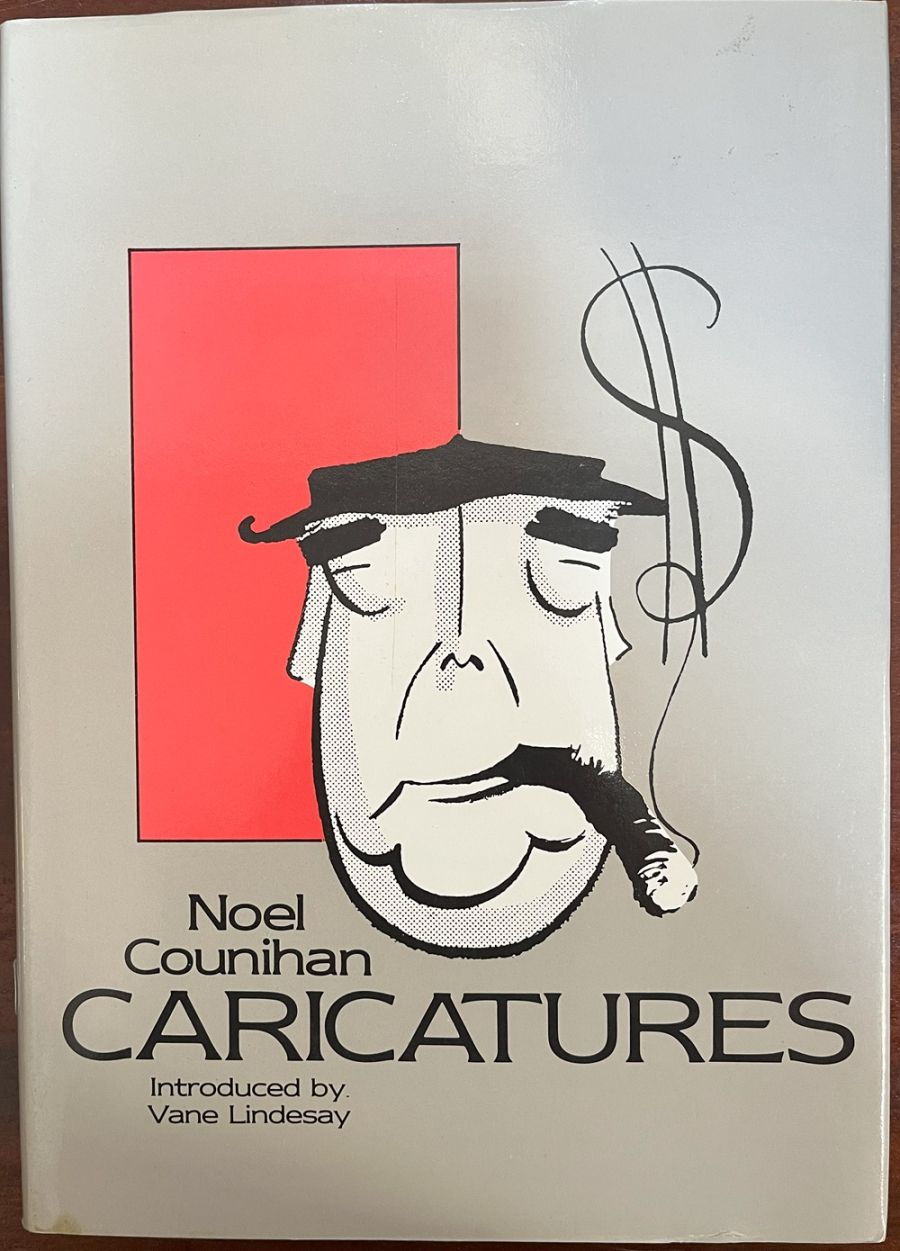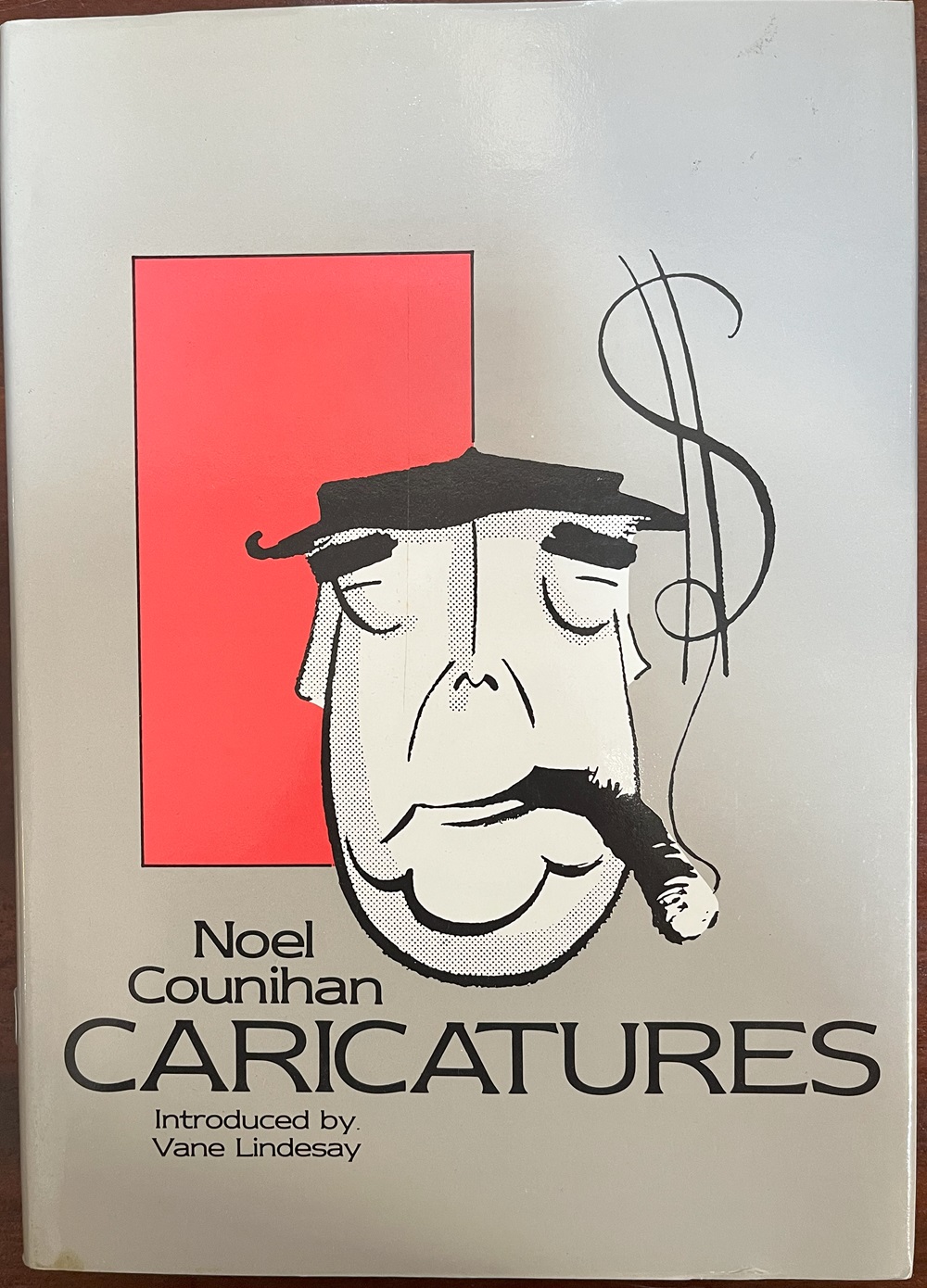
- Free Article: No
- Contents Category: Art
- Review Article: Yes
- Article Title: Counihan: Beautifully presented
- Online Only: No
- Custom Highlight Text:
Noel Counihan’s Caricatures is a splendidly designed book: in this respect another success for Vane Lindesay who has received several national awards for book design. The succinct and pertinent introduction is followed by eighty Counihan caricatures, each of which is effectively isolated in the stark white space of a separate page, while facing pages carry the emboldened name of the personality depicted and the bare essentials of explanation. Lindesay has chosen caricatures which reproduce well (hence the exclusion of the Argus caricatures, most - of which were originally reproduced in half-tone and are unsuitable for further reproduction). Apart from just looking good, Lindesay’s book design is intelligently helpful, encouraging as it does an aesthetic response to the works reproduced.
- Book 1 Title: Caricatures
- Book 1 Biblio: Hutchinson, illus., 175p.
- Book 1 Cover Small (400 x 600):

- Book 1 Cover (800 x 1200):

The caricatures span fifty years, from 1934. From the early thirties to the late fifties Noel Counihan made a living as a black and white artist, producing caricatures, illustrations and cartoons. Some of Counihan’s fiercest caricatures were produced in cartoon form for he left wing press, in Australia and abroad. These cartoons should not be confused with the portrait caricatures which are the subject of Lindesay’s book. This is an important point, for some of Noel’s followers (those who persist in labelling him ‘social realist) may expect a political sting but will find instead genial, time-honoured satire. These days Counihan often finds himself in a bind. He was damned as a propagandist in early years when he did bite; now he is sometimes damned when he doesn’t. In fact, Noel insists that, while he has never compromised himself, he owes a great deal to the conservative press which on two occasions offered him important (he says ‘life-saving’) commissions. The first commission for Melbourne caricatures Argus, came following from the artist’s first one-man exhibition of pencil portraits and caricatures at the age of twenty. This exhibition, incidentally, was opened by that eccentric caner of quavering choir-boys, Dr. A. E. Floyd, whose beak-nosed portrait is the earliest reproduced in the book. Another important commission to draw national political personalities came from the editor of the Daily Mail in London, enabling Counihan to break into Fleet Street in the fifties. These caricatures are well represented in the book.
Caricature is a distinct art: it is exaggerated, humours, penetrating portraiture; ‘a mock-comment on man’s appearance’ (as Lindesay states) involving ‘an assault on dignity’. Noel Counihan himself rightly regards with caricature as ‘a aesthetic serious values art and traditions, related to that robust tradition of the grotesque running vigorously through the history of the fine arts’. This aspect of Counihan’s work, then, must be assessed in the tradition of Honoré Daumier (jailed for five months after drawing King Louis-Philippe as Gargantua on a commode), William Hogarth, Thomas Rowlandson, James Gillray, Thomas Heine, Olaf Gulbransson, Bruno Paul and others. Lindesay’s introduction does precisely this, locating Noel’s work in the school of Australian portrait caricature that emerged in spasmodic fashion (Phil May, Will Dyson, George Finey who was such an important influence on Noel, and then a lesser gap to the New Zealand born David Low) from a background of European satirical journals.
Having established links with a great tradition, Lindesay gives the reader/viewer some aesthetic and technical insights into the caricatures; stressing Noel’s ability to exploit different graphic values. The experimental economy of line referred to in the introduction is immediately apparent in such works as the portrait drawing of Soviet landscape painter Georgi Nisski (1949). Here the caricature is a spontaneous brush drawing, and the likeness emerges magically from seven major strokes of varying thickness and a few tiny details. Also readily appreciated are the more detailed caricatures, such as that of Sir Douglas Mawson (1964), where carefully controlled spatter (fine randomly sized ink dots released by stroking an inked toothbrush with a knife), organised with a few brushstrokes, brilliantly conveys the tonal and textural effects of heavy fabric, enclosing Mawson’s superficial features, suggested with astonishing economy with pen. The bristly cross-hatching in the caricature of Roy Rene (completed 1977) is another example of outstanding textural effect.
Even without the benefit of Lindesay’s introduction (and it is decidedly of benefit), the most casual viewer must respond to Noel’s masterly draughtsmanship, to his ability to portray character, to capture the essence of public personalities. Dame Joan Sutherland (1984), for example, is launched openmouthed from the page like a rocket in an almost audible swirl of pen and brush strokes. The dangerous Ronald Reagan (1984), his claw-like hands clasped in rehearsed sincerity, has something of the parrot about him, bringing to mind the prating charlatans in Goya’s Caprichos.
Vane Lindesay concludes that Noel Counihan’s brilliant comic portraiture ‘has established his place for all time in the master class’. This is a sound conclusion, and one that could only be reached by surveying the complete range of Noel’s caricatures to date. Together with Robert Smith’s catalogue raisonné of Noel Counihan Prints 1931-1981 (Hale & Iremonger, 1981), which for the first time demonstrated the full extent of Noel’s printmaking interests and talents, Noel Counihan Caricatures opens the way for serious reconsideration of the graphic work. All that is needed now to complete this process of reassessment is a comprehensive published selection of Counihan’s magnificent drawings. Then perhaps he can be fully acknowledged as a master of graphic art. But when this happens, we’ll still, not be rid of him, for there remain the paintings, and the book illustrations, and the sculpture...


Comments powered by CComment